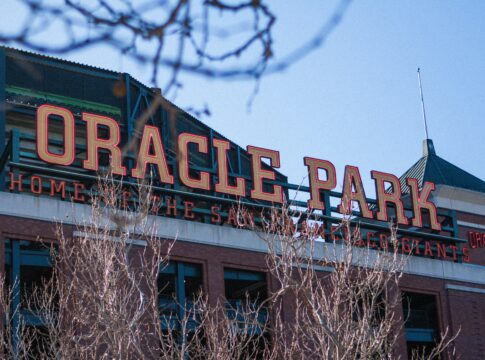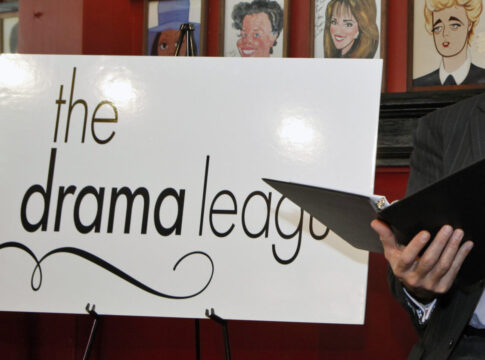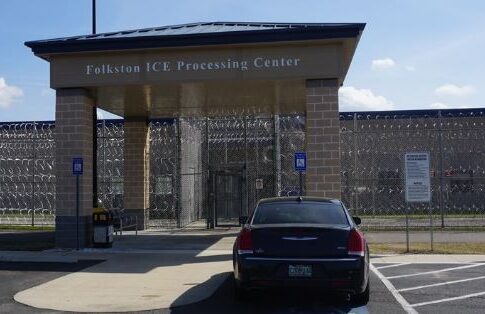By Raymond Douglas Chong, AsAmNews Contributor
When he was just a young boy, Sabu Dastagir, referred to by most people as just “Sabu,” became the first South Asian star in Hollywood.
Sabu graced Hollywood from 1937 to 1963. He sensationally debuted in the Elephant Boy in 1937 as a child star. Three years later, film critics acclaimed, and theatre audiences adored Sabu The Thief of Bagdad as Abu, the young thief. He was widely known for his natural acting, elegant physique, and winsome smile.
The talented actor was inducted into the Hollywood Walk of Fame in 1960, just three years before his death.
Early Life
Sabu was born Selar Shaik Dastagir on January 27, 1924, in Karnataka, Mysore, British India, and lived in the jungles. Shaik worked various jobs for Krishna Raja Wadiyar IV, Maharaja of the Kingdom of Mysore. Both parents, Shaik and Mohom Peri Dastagair, died early in Sabu’s life.
LATEST STORIES
While orphaned, Sabu was a mahout for the Maharaja’s elephants stable. In 1937, the British documentary filmmaker Robert Flaherty discovered him at a plantation for an important film role.
Hollywood Stardom as a Child Star
Sabu arrived in Hollywood as a child star during the era of American child stars Shirley Temple, Judy Garland, and Mickey Rooney.
Sir Alexander Korda, the famous director and producer, cast Sabu in Elephant Boy (1937), an adventure film. He played Toomai in Rudyard Kipling’s Toomai of the Elephants from The Jungle Book collection. Toomai discovers the elephants’ dance before he embarks on his first hunt. Sabu starred with W.E. Holloway, Walter Hudd, Alan Jeayes, and Bruce Gordon. The Elephant Boy was a box office hit. Korda signed Sabu under contract with his London Film Productions studio in Great Britain.
In The Daily Telegraph, Campbell Dixon acclaimed “FILM STAR FROM INDIAN STABLE – ELEPHANT BOY TALKS OF ENGLAND – AEROPLANES PLEASES SABU BEST.” He noted about the Elephant Boy: “In the Indian Jungle, Mr. Flaherty has found the elemental drama and pictorial beauty … plus, an enchanting little urchin called Sabu.”
Dixon praised Sabu, writing, “On the screen he makes an endearing little figure, with his black eyes, flashing smile and ebony body dress in the simplest outfit ever worn by a star – a loin-cloth and turban.
Korda produced The Drum (1938), an adventure film based on a novel by A. E. E Mason, as a star vehicle for Sabu. The film was set during the British Raj, with Sabu playing the loyal young Prince Azim. He warns the troops of the evil Prince Guhl’s betrayal through his message on the drum. The supporting cast included Raymond Massey, Desmond Tester, Rodger Livesey, and Valerie Hobson.
The Drum was another box office hit. The Daily Telegraph wrote, “”The Drum” marks another step in the progress of Sabu, the 14-year-old Indian boy, from elephant to film star who wears gold-embroidered clothes and rides a pure-bred Arab.”
A couple of years later Sabu starred in Korda’s The Thief of Baghdad (1940), alongside Conrad Veidt and June Duprez. He played Abu, the young thief who embarks on fantastic adventures with Sultan Ahmad after they escape from a passage in ancient Bagdad, based on “Arabian Nights.” Due to World War II, Korda brought Sabu to Hollywood to finish the production.
The Thief of Baghdad was a great box office hit in America and Europe. Film critics said it was Sabu’s finest performance. The Thief of Bagdad won the Oscars (1941) for Best Cinematography, Best Visual Effects, and Best Production Design.
In the Los Angeles Times, Edwin Schallert proclaimed, “”THE THIEF OF BAGDAD” PICTORIAL TRIUMPH.” He wrote: “Above all, “Thief of Bagdad” is a technical-artistic conquest. … Sabu is Sabu – a veritable wonder boy, who supplies a lift all his own for the picture.”
The film also received praise from famed film critic Robert Ebert.
“One of the most delightful fantasies ever put on film,” Ebert wrote. “The energy centers on the film are clearly supplied by Sabu and Veidt, as a boy bubbling with enthusiasm and innocent guile and a man steeped in bitterness and cruelty.”
Bill Yosh Watanabe, an elderly Angeleno Nisei, recalled fond memories of watching The Thief of Bagdad:
“After junior high school classes, me and my brother happily watched Million Dollar Movie on black and white television. It was a popular series with kids for its movie reruns. The special effects in The Thief of Bagdad were mesmerizing. Sabu was a Hollywood role model, an attractive Asian figure with a rascal persona. He clearly stood out in his lead role. I vaguely knew about the Hollywood White racism with its Oriental caricatures.”
In his last acting role with Korda, Sabu starred in Jungle Book (1942), an adventure film based on Rudyard Kipling’s “The Jungle Book.” Sabu plays Mowgli, a boy raised by wolves, who finds a treasure in the Indian jungle. Jungle Book was another Korda’s box office hit.
The Los Angeles Times headlined Jungle Book as “’Jungle Book’ Legendary Revel, Radiant in Color.”
“One thing is assured, the film will have great appeal for the youngsters because Sabu is the hero, and a strange character besides,” the review said. “He plays the role of Mowgli, lost to his parents, and reared among the wolves in a cave. … Sabu shows a new maturity in his screen work. He is, as always, a type more than a player but he is unusually effective in this picture, evidencing increased promise.”
After Korda returned to London Film Productions studio in Great Britain, Sabu stayed in Hollywood. He signed with Universal Pictures studio in Hollywood for a series of B films. He starred as a comic sidekick for Maria Montez and Jon Hall in their romantic adventures, in Arabian Nights (1942), as Ali Ben Ali in Bagdad, White Savage (1943) as Orano on a tropical island, and Cobra Woman (1944) as Kado on Cobra Island of the South Seas. The films were box office hits in America.
Hollywood studios denied romantic leading roles for Sabu. The Hays Code, A CODE TO GOVERN THE MAKING OF MOTION PICTURES, 1934 to 1968, did not allow miscegenation. He was stereotyped in supporting roles as an exotic character.
World War II Service
The federal Immigration and Naturalization Service naturalized Sabu as an American citizen on January 4, 1944. He enlisted with the United States Army Air Force. He trained at Harlingen Army Airfield in Texas as an aerial gunner.
Saub served in the Pacific Theater against the Imperial Japanese Armed Forces with the 307th Bomb Group. As an aerial gunner, he flew aboard 42 combat missions on a B-24 Liberator heavy bomber. The Army Air Force awarded the Distinguished Flying Cross for his valor and bravery. They honorable discharged him as Sergeant in 1946.
Hollywood Decline
Upon his return to Hollywood, Sabu had lost his star allure as he struggled to move past his child star fame. He was always typecast as an erotic native. But he continued to pursue his American dream. He acted in B films in America and Europe.
In Black Narcissus (1947), a drama film, Sabu briefly featured alongside Deborah Kerr. He played the Little General, a princeling living through the British Raj who seeks an education from Anglican sisters at a convent in the Himalayas. Black Narcissus won Oscars (1948) for Best Production Design and Cinematography.
On October 19, 1948, Sabu married Marilyn Cooper, a bit actor and White American, at an Episcopal Church in Encino. They met on the set of the Song of India film. They raised two children, Paul Sabu, son, and Jasmine Sabu, daughter, on their estate in Chatsworth. Paul is an Emmy-winning singer, songwriter, producer, and guitarist. Jasmine was a screenwriter and animal trainer for motion pictures.
In 1951, Sabu performed as an elephant driver at the famed Harringay Circus across Europe for three years.
The Evening Standard reported: “It was a slightly nervous Elephant Boy rather than in imperious wise-cracking Sabu who peeled off princely trapping after his first circus act last night at Harringay.”
The inaugural Hollywood Walk of Fame honored Sabu’s contribution to the motion pictures industry in November 1960. The honorees included pioneer Asian American actors Anna May Wong and Sessue Hayakawa.
Sabu last starred in Walt Disney’s A Tiger Walks film. However, he never acted in any Hindi film in India.
On December 2, 1963, Sabu died of a heart attack at his Chatsworth home in Los Angeles. He is buried at the Forest Lawn’s Hollywood Hills Cemetery. His gravestone reads:
Sabu
Beloved Husband and Father
1924 – 1963
Until the Day Break and the Shadows Flee Away
Reflection
Sabu starred in Hollywood from 1937 to 1942 during his zenith, with seven box office hits. He acted in leading roles while Americans and Europeans acted in yellowface. He thrived under the legendary Sir Alexander Korda in his first four films. Two Oscar-winning films featured Sabu.
Sabu indelibly left his mark during the Golden Age of Hollywood as the first South Asian actor on the silver screen. From obscured poverty to international stardom, Sabu blazed the trail for future South Asian actors.
AsAmNews is published by the non-profit, Asian American Media Inc. Follow us on Facebook, X, Instagram, TikTok and YouTube. Please consider making a tax-deductible donation to support our efforts to produce diverse content about the AAPI communities. We are supported in part by funding provided by the State of California, administered by the California State Library in partnership with the California Department of Social Services and the California Commission on Asian and Pacific Islander American Affairs as part of the Stop the Hate program. To report a hate incident or hate crime and get support, go to CA vs Hate.








